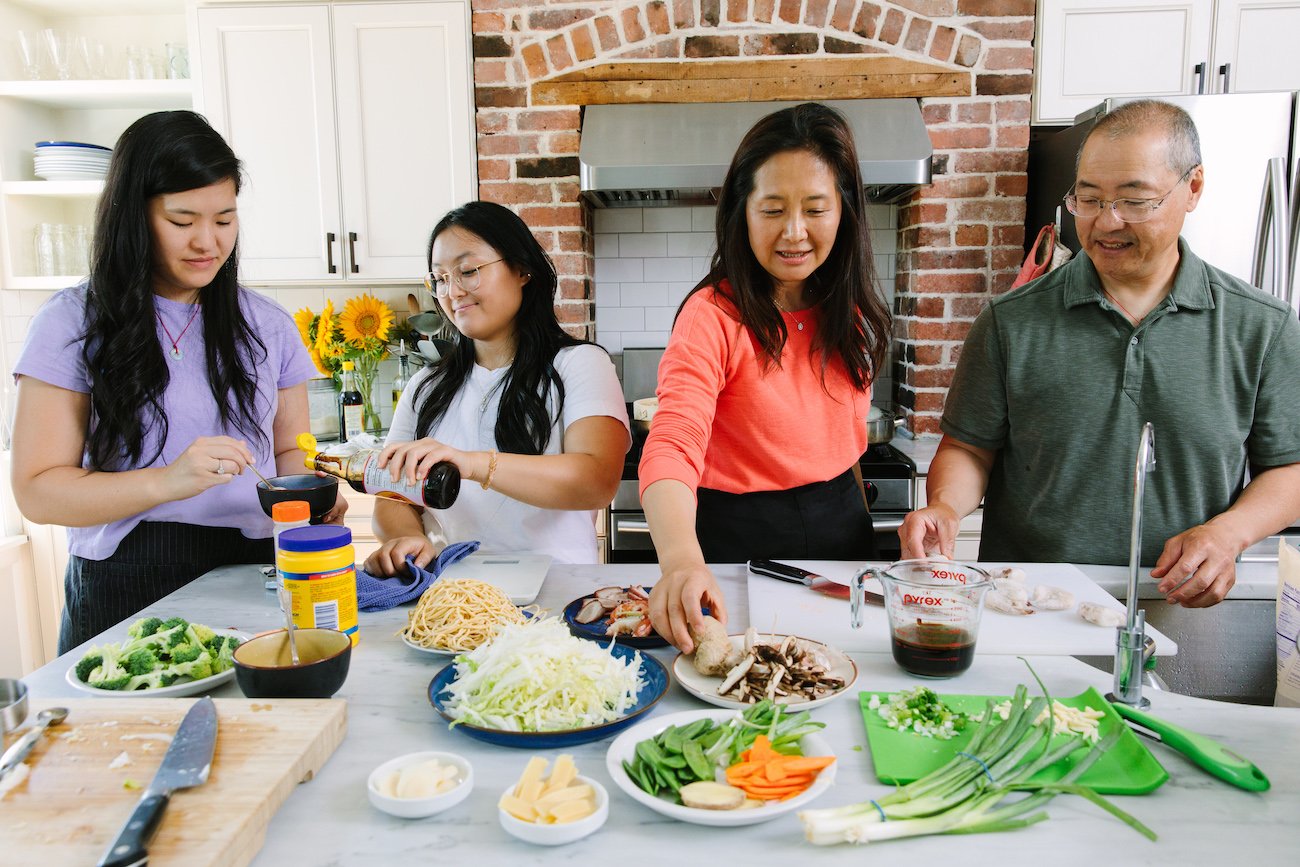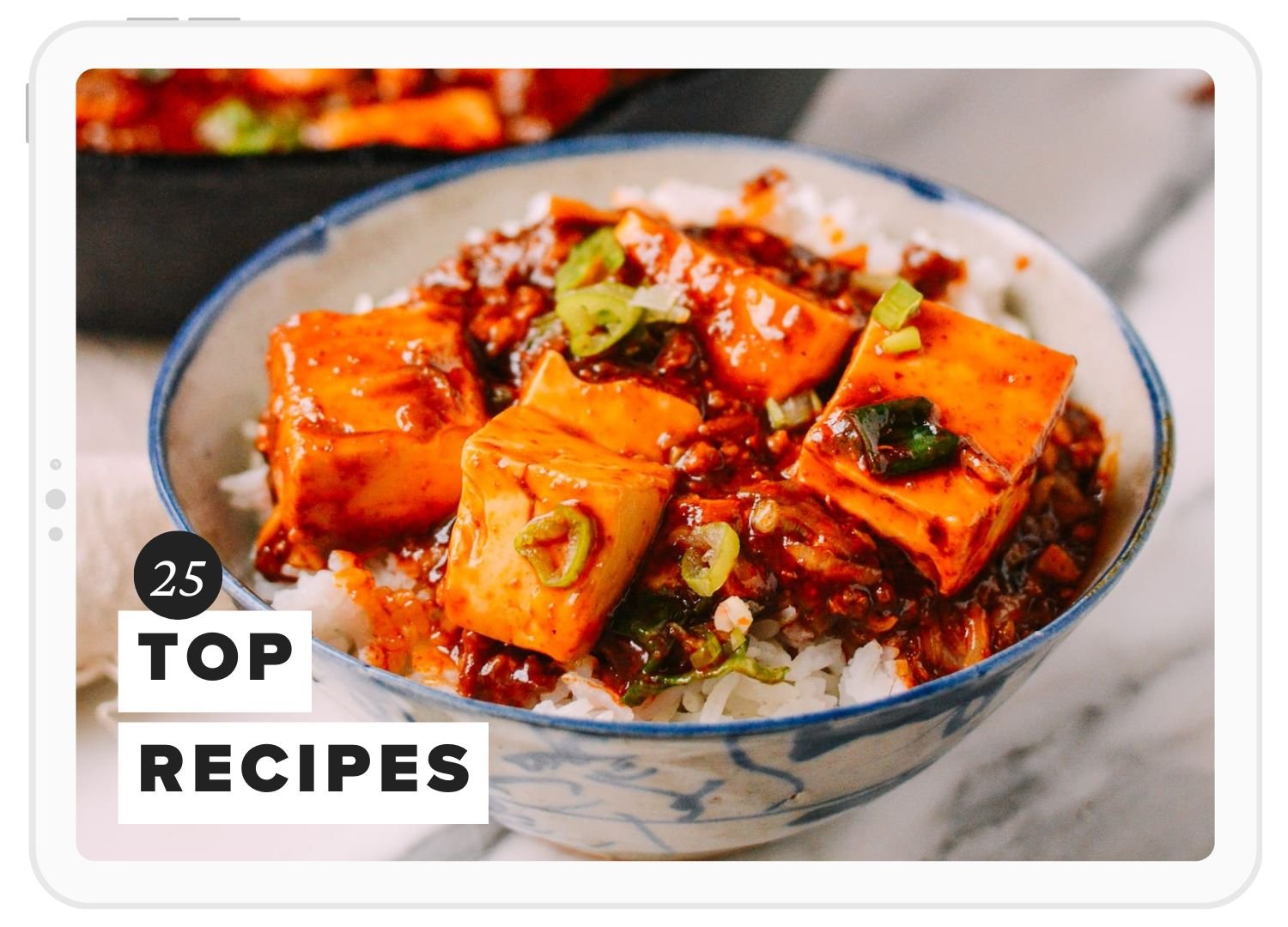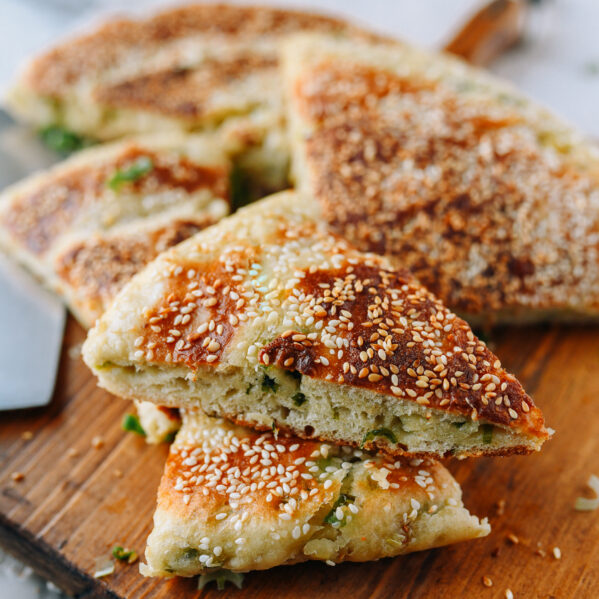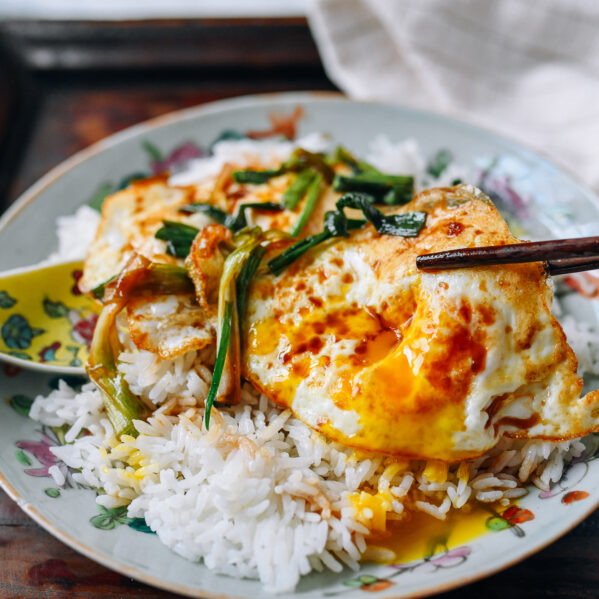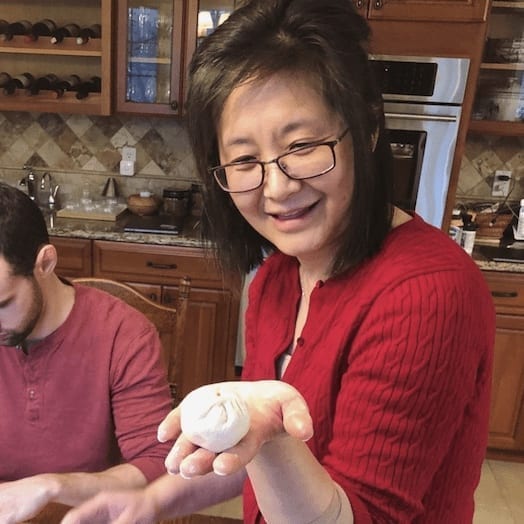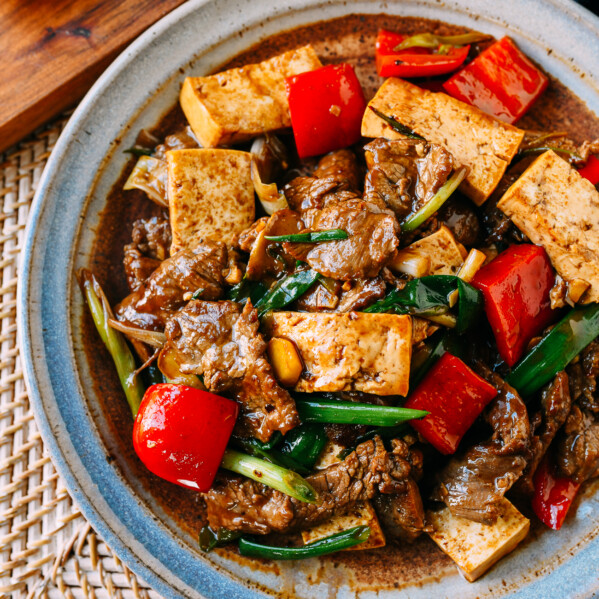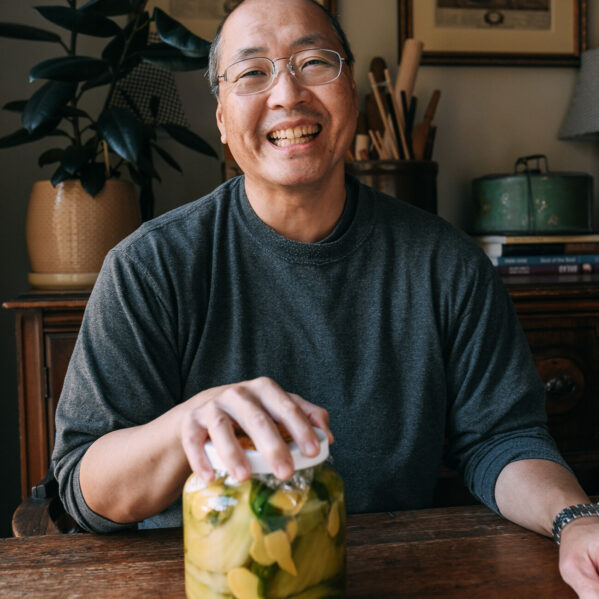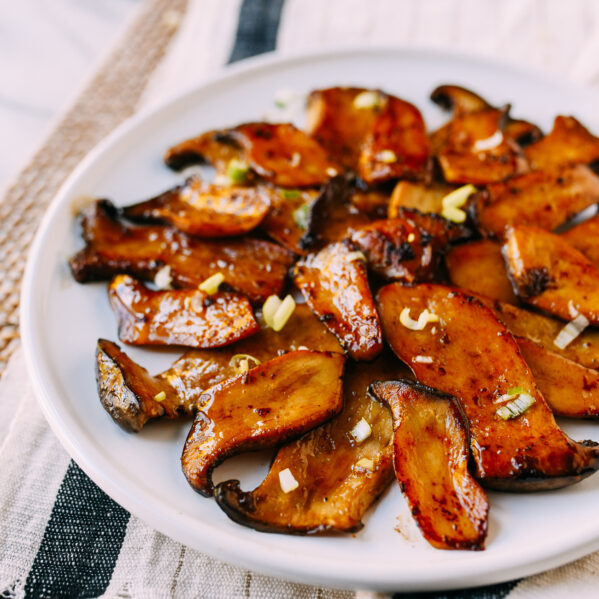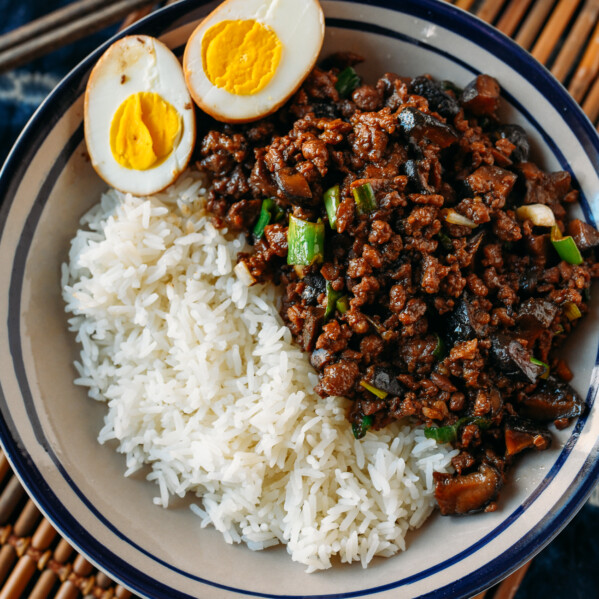
Not only does black rice have great health benefits, it has an enjoyable texture and taste: chewy, nutty, and slightly sweet. In this post, we’ll talk about how to cook black rice, also known as purple rice or forbidden rice.
In fact, I’ve been eating much more black rice than white rice these days, so I wanted to share how I prepare it.
An Once Forbidden Food
I don’t know too much about the history of black rice, but I do know that it is often referred to as “forbidden rice” in English. Sources say that it was designated as “forbidden rice” or “imperial rice” due to the fact that it was believed to promote health and longevity, and therefore reserved for imperial use.
I don’t know how true this is, but I do know that the color yellow/gold was only allowed to be worn by the imperial family, so this doesn’t seem all that far-fetched. And the color purple has been associated with royalty since ancient times.
Luckily, today we “commoners” are allowed to eat it and enjoy it. It’s a good thing, because more and more, I find myself preferring healthier types of rice rather than white rice—especially black rice!

Just know that black rice has a different texture from white rice. It has more body, since the outer hull of the rice is still on it. The texture is similar to brown rice.
Get the right rice
When buying black rice, make sure you’re buying hēi mǐ (黑米) – black rice — and not hēi nuòmǐ (黑糯米), which is black glutinous rice, a type of sticky rice.

Black glutinous rice is often seen in Asian desserts, like our Mango Black Sticky Rice dessert. Black glutinous rice is also healthier than regular white glutinous rice.
Health Benefits of Black Rice
Black rice has one of the highest concentrations of anthocyanins, which give it its purple-black color.
These are the same flavonoids that give blueberries, blackberries, plums, beets, and red cabbage. They have anti-inflammatory and anti-cancer properties.
In short, naturally purple foods are good for you!
Black rice is also higher in fiber and protein than regular rice, and has a lower glycemic index, so it doesn’t spike your blood sugar as much as white rice.

How to Cook Black Rice
To cook black rice or forbidden rice, you will need to soak it beforehand. Because the rice has a thick outer hull, soaking it for several hours will allow it to cook properly and also give it a more tender texture.
The rice has to soak for at least 4 hours. 6 hours or overnight is better if you have the time. Basically, the day you’d like to make black rice for dinner, measure it out and soak it in the morning or the night before.
Other than this simple soaking step, it’s a lot like cooking white rice!
I’ll talk about how to cook it both in a rice cooker and in a pot on the stove.
Rice Cooker Method:
Measure out your rice in the rice cooker pot and rinse it, pouring off the water.
To the rice in the pot, add the amount of water that corresponds to the number of rice cooker cups you added. (The little plastic cup the rice cooker comes with is usually equivalent to US ¾ cup.) If you added 3 rice cooker cups, fill with water to the number 3 line.
Cover and soak the rice for at least 4-6 hours, or overnight. Put the pot into your rice cooker, and turn it on.

NOTE:
You are using the same soaking water to cook the rice. The water is full of that healthy purple pigment—you don’t want to lose it!
Stovetop Method:
Measure out your rice and note the volume. Rinse your rice, drain, and add it to a bowl. Cover with 2 inches/5cm of fresh water. Cover and soak the rice for at least 4-6 hours, or overnight.
When you’re ready to cook the rice, pour the soaking liquid into a measuring cup. Transfer the soaked rice to a pot that will accommodate the rice once cooked—it will almost triple in volume.
Now, look at the volume of soaking liquid in your measuring cup. You want the same volume of water as the amount of rice you started with. So if you started with 2 cups of rice, you need 2 cups of water to cook it. You may need to add some additional water to your soaking liquid to get to this volume.
Add the water to the pot with the rice. Put the pot on the stove, and turn on the heat to medium-high. Cover and bring the pot to a boil. Then immediately turn down the heat to medium low, and cook for 15-20 minutes with lid on, until all the water is absorbed into the rice. Shut off the heat, let your rice sit covered on the stove for another 10 – 15 minutes to finish cooking.


Tip:
These methods will yield firmer, individual kernels of cooked rice. If you like your rice softer, you can add a little more water.

Looking for more authentic recipes? Subscribe to our email list and be sure to follow us on Pinterest, Facebook, Instagram, and Youtube!
Recipe
How to Cook Black Rice
Ingredients
- black rice
- water
Instructions
Rice Cooker Method:
- Measure out your rice in the rice cooker pot and rinse it, pouring off the water.
- To the rice in the pot, add the amount of water that corresponds to the number of rice cooker cups you added. (The little plastic cup the rice cooker comes with is usually equivalent to US ¾ cup.) If you added 3 rice cooker cups, fill with water to the number 3 line.
- Cover and soak the rice for at least 4-6 hours, or overnight. Put the pot into your rice cooker, and turn it on.
Stovetop Method:
- Measure out your rice and note the volume. Rinse your rice, drain, and add it to a bowl. Cover with 2 inches/5cm of fresh water. Cover and soak the rice for at least 4-6 hours, or overnight.
- When you’re ready to cook the rice, pour the soaking liquid into a measuring cup. Transfer the soaked rice to a pot that will accommodate the rice once cooked—it will almost triple in volume.
- Now, look at the volume of soaking liquid in your measuring cup. You want the same volume of water as the amount of rice you started with. So if you started with 2 cups of rice, you need 2 cups of water to cook it. You may need to add some additional water to your soaking liquid to get to this volume.
- Add the water to the pot with the rice. Put the pot on the stove, and turn on the heat to medium-high. Cover and bring the pot to a boil. Then immediately turn down the heat to medium low, and cook for 15-20 minutes with lid on, until all the water is absorbed into the rice. Shut off the heat, and let your rice sit covered on the stove for another 10-15 minutes to finish cooking.





